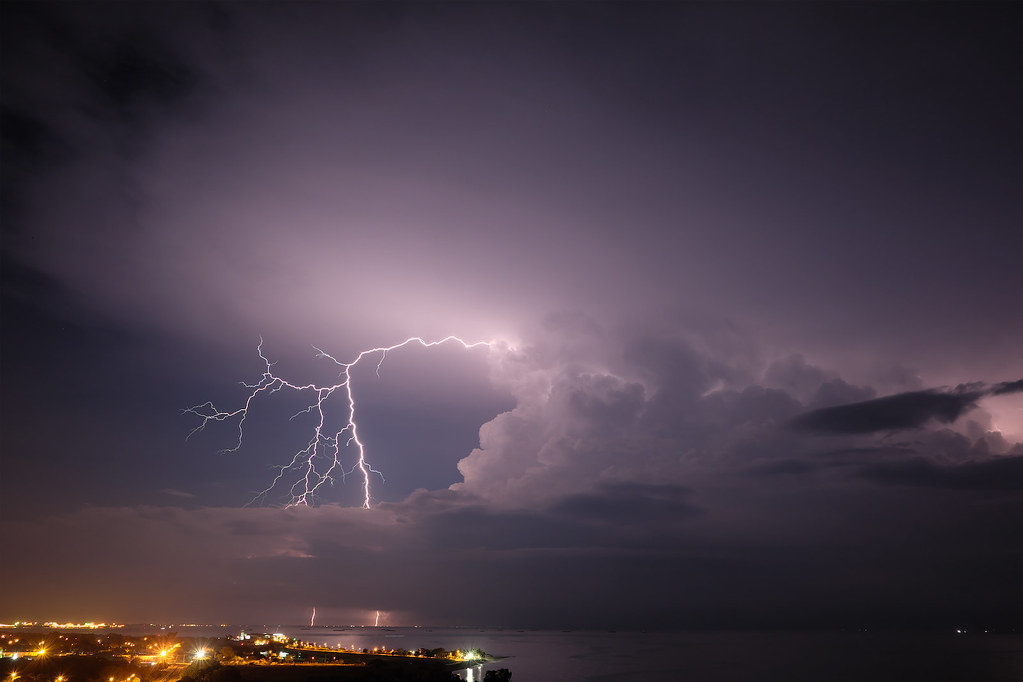Atmospheric Electricity
A special issue of Atmosphere (ISSN 2073-4433). This special issue belongs to the section "Meteorology".
Deadline for manuscript submissions: closed (30 June 2021) | Viewed by 22363
Special Issue Editors
Interests: atmospheric electricity; space physics; global electrical circuit; geoelectricity
Special Issues, Collections and Topics in MDPI journals
Interests: atmospheric electricity; lightning (on Earth and other planets); space weather; solar–terrestrial relations and transient luminous events (sprites); dust storm electrification; cloud microphysics
Special Issues, Collections and Topics in MDPI journals
Special Issue Information
Dear Colleagues,
Although atmospheric electricity has a long history of research, epoch-making discoveries have been made in each period. In recent decades, lightning/thunderstorm-induced energetic radiation, transient luminous events such as sprites and elves have been discovered, as well as terrestrial gamma-ray flashes. Recently, challenging research topics such as the relationship between atmospheric electricity and biological/biochemical effects and the relationship between atmospheric electricity and climate/severe-weather have become the focus of new and groundbreaking research. Orbiting satellites and lightning detection systems are producing new data and numerical modelling, including artificial intelligence applications, are yielding new and exciting insights into the nature of thunderstorms. Therefore, we are planning a Special Issue dedicated to the contributions covering all areas related to atmospheric electricity.
A Special Issue on atmospheric electricity is, therefore, open to the multi-disciplinary and various studies from a conventional research field such as global electric circuit, lightning physics, aerosol and cloud microphysics, and thunderstorm electrification, to a modern research field such as lightning/thunderstorm-generated energetic radiation, transient luminous events, and the evolution of the Earth’s climate.
We welcome contributions of various article types such as original research and reviews.

The image was taken by Oscar Van der-Velde.
Prof. Dr. Masashi Kamogawa
Prof. Dr. Yoav Yair
Guest Editors
Manuscript Submission Information
Manuscripts should be submitted online at www.mdpi.com by registering and logging in to this website. Once you are registered, click here to go to the submission form. Manuscripts can be submitted until the deadline. All submissions that pass pre-check are peer-reviewed. Accepted papers will be published continuously in the journal (as soon as accepted) and will be listed together on the special issue website. Research articles, review articles as well as short communications are invited. For planned papers, a title and short abstract (about 100 words) can be sent to the Editorial Office for announcement on this website.
Submitted manuscripts should not have been published previously, nor be under consideration for publication elsewhere (except conference proceedings papers). All manuscripts are thoroughly refereed through a single-blind peer-review process. A guide for authors and other relevant information for submission of manuscripts is available on the Instructions for Authors page. Atmosphere is an international peer-reviewed open access monthly journal published by MDPI.
Please visit the Instructions for Authors page before submitting a manuscript. The Article Processing Charge (APC) for publication in this open access journal is 2400 CHF (Swiss Francs). Submitted papers should be well formatted and use good English. Authors may use MDPI's English editing service prior to publication or during author revisions.
Keywords
- atmospheric electric field
- schumann resonances
- global electric circuit
- lightning physics
- tweek
- whistler propagation
- sferics
- transient luminous events
- energetic radiation from lightning
- aerosol and cloud microphysics
- thunderstorm electrification
- particle precipitation and cosmic rays
- magnetosphere–ionosphere–atmosphere coupling
- biological and biochemical effects of atmospheric electricity
- remote sensing of lightning
- climate change effects on lightning






